Mountains and panoramic visits
In the immediate vicinity of the Hotel, we advise our guests to visit the Mottarone, about 25 minutes by car from the hotel, or 15 minutes by cable car, ideal for walking and mountain enthusiasts. At 1,497 m of altitude, from its summits you can enjoy the view of the six lakes in the Po Valley, of the Italian and Swiss Alps and of the majestic Monte Rosa. The peak, also equipped for winter sports, can be reached by cable car or by car along "The Borromea", a scenic route taking you through torrents, centuries-old woods and soft meadows. The Mottarone rises between the Maggiore and Orta lakes, between the provinces of Verbania and Novara. From the summit, the view stretches from the Maritime Alps to Monviso, from the nearest Monte Rosa massif to the Swiss Alps, up to the Po Valley.
Since 1970, the Stresa-Alpino-Mottarone cable car has led directly to the summit, but for over fifty years it was the Mottarone funicular, a yellow train, which tirelessly led tourists and skiers to the summit.
The cable car can be found on the outskirts of Stresa beside the lakeside in front of Isola Bella, in 20 minutes, reaches an altitude of 1.491 meters.
The Giardino Alpinia is a 40,000 m2 natural terrace on the Mottarone, where visitors can relax while enjoying the view and staying in close contact with nature.
The Parco del Mottarone (Alpyland) is a sort of alpine coaster: an attraction similar to a roller coaster with the particularity that each user can decide the speed at which to face the track that develops all downhill. The track is 1,200 m long and develops over a height difference of 100 m. The attraction is open to the public almost all year round except for November. Live the thrill of a breathtaking descent on the extraordinary bobsled roller coaster dropping sheer to the Lake Maggiore. Emotion and fun guaranteed for everybody.
In winter the mountain becomes an important ski center, with its 15 km of equipped ski slopes and a rental point.
Located on the south western bank of Lake Maggiore, Arona is an important trade and tourist destination. After falling under the control of the Visconti family in 1277, Arona became fief of the Borromeo family between 1439 and 1797.
Already in the Middle Ages, in Piazza del Popolo under the arcades of the Porto district, the market was held every Tuesday, as still happens today; people flocked to it from every part of the lake and from all the neighboring towns, both to make purchases and to place their products or to trade them for imported products.
The fortress Rocca Borromea was built for defensive purposes on the Piedmont side of the lake, opposite Angera. The hill where the Fortress stands, owned by the Borromeo family, was cultivated until 1970 when the Fortress was granted to the Municipality of Arona and was opened as public park. The Parco della Rocca of Arona was reopened to the public in 2011.
The ancient Borromeo Castle, founded shortly before the year 1000 under the control of the Lombards, witnessed the birth of St. Charles Borromeo in 1538 in one of the corner rooms of the fortress, known as the “three lakes room” because of the view over the lake. The Colossus of San Carlo Borromeo was inaugurated and blessed by Cardinal Caccia in 1698. Reach the top from the inside and enjoy a fantastic view.
Verbania is the main administrative center of Lake Maggiore, founded in 1939 with the unification of Intra, Pallanza and Suna (as well as minor villages). It has recently become the seat of the Verbano Cusio Ossola Province. Among the suburbs of Verbania, Intra is the most important commercial lake-port, characterized by the daily ferry line “Navigazione Lago Maggiore” – the historical public transport company established in 1825 - to Laveno Mombello (Va), on the Lombard bank. The town centre is a pedestrian zone made by narrow lanes and small courtyards and included between the “lungolago” and San Vittore Basilica. Standing out as a shopping destination, its streets Via San Vittore, Via San Fabiano, Corso Garibaldi and the central Ranzoni Square are lined by many shops, cafés and restaurants.
The historic center, with its alleys overlooking the lakefront, is in itself the classic destination of tourists walking in Verbania: a path where all the character and the unmistakable atmosphere of Verbania are expressed at their best, among secular trees like magnolias and chestnut trees, as well as various sculptures that further embellish the context.
The lakeside of Pallanza is a wonder not afford to miss. The areas and the most ancient streets are well kept, they preserved many stores, clubs of all kinds and buildings of architectural merit.
Directly on the coast of Lake Maggiore is the Theater "Major" designed by a team of architects under the guidance of Salvador Perez Arroyo, which is an event center, theater and home to major concerts.
Intra and Pallanza markets for centuries have represented an important moment of exchange and meeting with producers who were also traveled long distances to sell their goods. Today even completely changed still retain their charm and keep alive the memory of ancient customs; stalls are mostly industrial goods but it is not uncommon to find local producers with the first fruits of the land.
Baveno is a charming vacation resort close to the Borromeo Gulf. Most important monuments are the S.S. Gervaso and Protaso Parish Church, with a characteristic gabled façade showing traces of an ancient fresco decoration, and the Baptistery, characterized by a square plan on the inside and an octagonal form on the outside.
The lakefront retains a special charm offering magnificent views of the nearby Isola dei Pescatori and Isola Bella especially early morning and in the hours of sunset and late evening. From the artistic point of view the most important evidence is represented by the monumental religious complex with a parish church, bell tower, baptistery and stations of the cross. The façade has two Roman tombstones of Romanesque architecture as well as the bell. Very impressive is the baptistery dating about the fifth century, extensively modified over the following centuries and interior frescoes of Renaissance origin. In more recent times the arcade with the Via Crucis added to the complex in 1939.
Worth a visit is also the Lago Maggiore Aquadventure Park, a fun park for the whole family with indoor and outdoor swimming-pools, slides and an adventure-zone.
At the foot of the majestic rock face of Monte Rosa, Europe's highest peak, is Macugnaga, about an hour's drive from Stresa. It is a village founded eight centuries ago by the Walser population of German origin, rich in traditions and culture preserved over the years through its houses made of stone and wood, the costumes with precious embroidery, the language and the typical traditions. It offers tourist accommodation services, modern sports facilities and ski resorts.
Cannero, one-of-a-kind vacation resort nested on a small sunny promontory, it has become famous for its mild climate both in summer and winter. Visitors can take a ferry ride to reach the picturesque castles of Cannero. Sport lovers can enjoy swimming, sailing, canoeing, fishing, etc. from its long and wide beach. Its crystal-clear waters and the top-quality services granted this area the “Blue Flag” (“Bandiera Blu”).
The Castles of Cannero, also known as “Malpaga Castles”, rise from the water not far from the shore. They stand on two islets fortified during the Middle Ages as a defense zagainst brigands who would use them as hideaway and to control the trading with neighboring Switzerland.
From the 1960s Cannero Riviera was the scene of a revaluation of the Camelia, which, after a shining success in the nineteenth century, had been forgotten. Here the passion for this marvelous flower has flourished again and every year the Mostra della Camelia. The display part of the cut flower shows more than 250 species of camellias brought by local florists, from Lombardy, from nearby Switzerland and from amateurs and admirers of this delicious flower, for an exhibition on an area of about 300 square meters.
Cannobio is an animated tourist resort and destination particularly loved by foreigners. It has historical monuments such as the beautiful San Vittore Collegiate Church and S.S. Pietà Sanctuary.
A true wonder of nature at just a short walking distance from Cannobio towards the mountains above: the Sant’Anna Gorge. The unrelenting millennial activity of the Cannobino stream has hollowed out this 25 m. deep ravine. The gorge was named after the Sanctuary nearby with valuable paintings dedicated to Sant’Anna’s life.
In July 2003, UNESCO included the Sacred Mounts of the Holy Trinity of Ghiffa, Orta, Varallo, Belmonte, Oropa, Crea and Domodossola in the list of world heritage, writing: «The realization of a work of architecture and sacred art in a natural landscape, for educational and spiritual purposes, has reached its highest expression in the Sacred Mountains of northern Italy and has had a profound influence on subsequent developments in the rest of Europe [...] The Sacred Mountains of northern Italy represent the successful integration of architecture and fine arts in a landscape of remarkable beauty. In a critical period of the history of the Catholic Church they witnessed an attempt to recover Christian values ".
The Sacred Mount of Orta is a monumental complex dedicated to Saint Francis of Assisi, elevated at the top of hill behind the downtown area. It was in the XVII century that first Saint Charles Borromeo and then Carlo Bescapè Bishop of Novara started the construction of the Sanctuary, aimed at contrasting the effects of the Transalpine Protestant Reform. The project was completed only much later during the XVIII Century. 21 chapels narrating the life of Saint Francis in chronological order follow one another along a spiral course. Today’s visitor climbs up toward a moral regeneration at the same time enraptured by the beauty of the terracotta statues and the frescoes decorating the chapels.
In the Special Nature Reserve of the Holy Trinity Sacred Mount is the monumental baroque complex of the Sacred Mount. Its Sanctuary and the three chapels celebrate the mystery of the Holy Trinity. Erected to replace an ancient oratory, the Sanctuary of Ghiffa was constructed in 1605 to receive the great number of pilgrims who would come to visit it as it was considered miraculous.
The Special Nature Reserve of the Sacred Mount Calvario declared by Unesco in 2003 part of the World Heritage, rises on the historical Mattarella Hill, one of the areas so beloved by Antonio Rosmini. The Sacred Mount complex was started in 1656 with the Sanctuary followed then through the centuries with the 15 chapels that narrate the Way of the Cross.
The Sacred Mount of Varallo Sesia, the oldest, was a model for the other Piedmontese and Lombard Sacred Mounts: it is part of the list of Christian shrines, dedicated to Christ and the cross, to the cult of saints, to the Madonna, and to the Archangel Michael.
Located on a medieval place of worship, then home to a convent of nuns and a shrine dedicated to the Virgin Mary, the Sacro Monte di Varese was built starting from 1604. The devotional route develops from the vicinity of Varese to the top of Mount Velate and it represents the Mysteries of the Rosary which, after the battle of Lepanto in 1571, had become a source of inspiration for religious devotion in Europe.
An evocative trip to Locarno, the old part of town, known as Città Vecchia, is full of interesting surprises: do not miss the palaces, churches, the Visconti Castle and the narrow alleys in which you breathe peace and tranquility. Magnificent is the panoramic route along the shores of Lago Maggiore.
Following the lakeside path from Minusio to Muralto and Locarno, you will reach the Camellia Park, not far from the Maggia river. It is an easy route, entirely flat, mostly on sidewalks and roads exclusively for pedestrians and cyclists.
Lago Maggiore Express offers the opportunity to enjoy an unforgettable trip by train and ferry from spring to autumn. First take the train (“Trenitalia” from Lake Maggiore to Domodossola, then the Vigezzina-Centovalli) and finally the “Navigazione Lago Maggiore” ferry (from Locarno back to the town of departure) or vice versa. Discover the wonders of the mountains and lake in just one day!
The Vigezzina-Centovalli Line is a panoramic line which takes visitors to see marvelous scenery in Val Vigezzo and Centovalli. Every year, it carries hundreds of thousands of passengers between a Domodossola, in Val d'Ossola, and Locarno, in Canton Ticino. A trip on the Vigezzina-Centovalli can be paired with cableway itineraries to give the more athletic an opportunity to go on several excursions in Centovalli and Valle Vigezzo.
Romantic and not to be missed, is a visit to the beautiful Lake Orta, about 40 minutes by car from Stresa. As the famous writer from the Lake Maggiore area, Piero Chiara, it is “A watercolour created by God, painted on a silk backdrop, with the Sacro Monte behind it, its moving avenue with closed buildings alongside it, the silent square with peaked facades behind the horse chestnut trees and opposite the island of San Giulio…” It is a place of magical silence and graceful sophistication.
Lake Orta is in Northern Italy, west of Lake Maggiore to which it is linked through the Nigoglia stream and the Strona and Toce rivers. Here many illustrious artists and people of culture spent their holidays and celebrated it and business men established an industrial district.
Orta San Giulio is a renowned tourist center and a summer resort. It takes its name after St. Jules, who was sent here during the IV century by emperor Theodosius to evangelize the area and fight against the Arian heresy. Villa Motta (XIX century) is a private residence famous for its flowers: the garden can be visited in blooming time. Villa Bossi hosts the Town Hall: it has a beautiful garden overlooking the lake, hand-made iron gates and small balconies. The “Palazzo della Comunità” on the Motta Square was built in 1582 and was the Courthouse where the legislative and judiciary authority was exercised.
The island of San Giulio stands just a few minutes by boat from Orta. In the middle, the “Mater Ecclesiae” Abbey has been an important monastery of Benedictine nuns since 1973. Interesting and peaceful are the walk around the island, its villas and views of the lake. Of a very ancient origin as testified by early-Christian archaeological findings (kept in the crypt), the Basilica probably stands on the site where St. Jules is supposed to have erected a church in the IV century. Of clear Romanesque structure, the present church (IX-XI century) is built to a Latin-cross plan and has a nave and two aisles with apses.
A peaceful corner with crystal clear waters very near to the point where the Toce river flows into Lake Maggiore, basin from which the Lake of Mergozzo originates. In ancient times, this tiny lake was in fact a gulf of Lake Maggiore.
Ossola is so close to the Swiss border and yet and so Italian as shown by its attractions, typical cuisine and tradition. Here Nature is in any way the absolute protagonist: alpine lakes, parks, forests and white slopes contribute to shape the rich landscape. The Val Grande National Park, the most extensive Wilderness Area of the Alps (about 15,000 hectares) is enclosed between Lake Maggiore and Ossola, that is the Val Grande National Park. The European Wilderness Association declared the only area in Europe that completely maintains original environmental properties. The second highest European summit, Mount Rosa, represents the real jewel of the Anzasca Valley. From the Bognanco Valley, also known as the “valley of 100 waterfalls”, a paradise for canyoning and hiking lovers, to the Antrona Valley, lately declared Regional Nature Park, and the Antigorio-Divedro-Formazza Valleys ,with the famous 145 m high Toce Waterfall: a definitely dreamlike combination for a holiday immersed in the most uncontaminated nature.
At La Frua the water of this sensational natural display falls into the ravine for 145 m. reaching a width of 60 meters at the base. The Toce Waterfall is used for hydroelectric purposes: the water is partially led into a forced duct and “let free” in all its majestic power only during specific summer periods. Continuing along the main road one reaches the imposing dam wall of the artificial Morasco Lake.
The Morasco Dam, 565 meters long and 55 high, was created in the 1930s to generate electricity to meet the needs of the valley. It is located in close proximity to the village of Riale, the northernmost fraction of Piedmont.
The valley is also famous for the baths of Premia, a village whose natural hot water has therapeutic properties.












